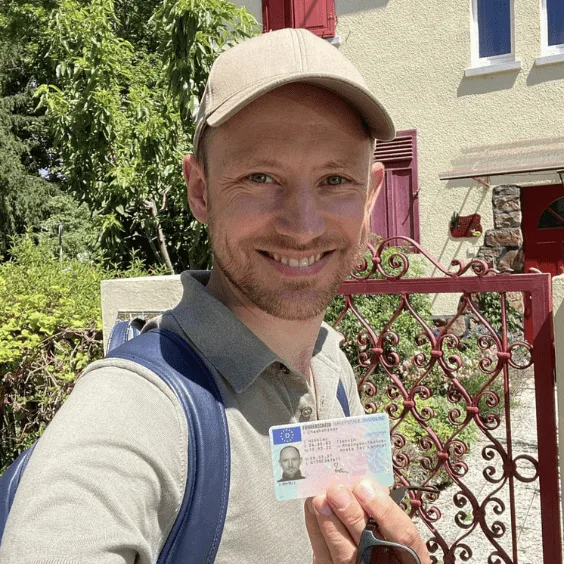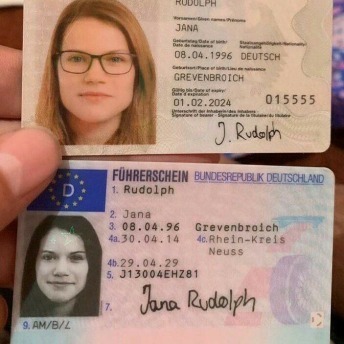Collin님의 문의내용입니다.
-
작성자Collin
-
조회수53회
-
등록일25-06-23 05:38
성함
Collin
연락처
이메일
유입경로
인스타그램 인스타그램
주소
평형
공사시기
공간유형
상업공간
공사예산
4,000~5,000
문의내용
How to Buy a Motorcycle License: A Comprehensive Guide
Motorcycling is not just a mode of transportation however also an exhilarating hobby for lots of. Nevertheless, before you can rev your engine and struck the roadway, you must obtain a bike license. This guide aims to supply detailed info on the process of purchasing a motorcycle license, making sure that prospective riders have a clear understanding of the requirements, actions, and regularly asked questions.
Understanding the Basics
A motorbike license, also called a bike endorsement, is a special designation on your driver's license that permits you to lawfully operate a motorbike on public roads. The process of getting this endorsement varies by state or nation, however generally includes a mix of composed tests, practical training, and road tests.
Step-by-Step Process to Obtain a Motorcycle License
Research Your State's Requirements

- Each state or nation has its own set of regulations and requirements for motorbike licensing. Start by visiting your local Department of Motor Vehicles (DMV) or comparable agency's website to collect particular information.
- Keep in mind the age requirements, costs, and any necessary paperwork.
Research Study the Motorcycle Manual
- The DMV or equivalent company generally provides a motorbike handbook that covers essential details such as traffic laws, safe riding practices, and motorcycle-specific rules.
- Familiarize yourself with the manual to get ready for the composed test.
Take a Motorcycle Safety Course
- Many states require or strongly suggest that you finish a fundamental motorbike safety course before requesting a license.
- These courses, typically offered by organizations like the Motorcycle Safety Foundation (MSF), teach you the principles of motorbike riding, including braking, turning, and emergency maneuvers.
- Completing the course can likewise qualify you for a waiver on the useful riding test and might provide discounts on insurance coverage.
Get a Learner's Permit
- Visit your regional DMV or utilize their online portal to obtain a learner's permit.
- You will require to pass a written test that covers traffic laws and safe riding practices.
- The student's license normally enables you to ride a motorbike under certain constraints, such as being accompanied by a licensed rider or not riding at night.
Practice Riding
- When you have your learner's permit, practice riding under the guidance of a skilled motorcyclist or a certified trainer.
- Focus on building your abilities in a safe environment, such as a parking area or a peaceful street.
- Practice different riding situations, consisting of starting and stopping, turning, and browsing through traffic.
Schedule and Take the Road Test
- When you feel confident in your riding capabilities, schedule your road test with the DMV.
- Throughout the test, you will be evaluated on your capability to safely run a motorbike, browse numerous traffic circumstances, and follow traffic laws.
- If you stop working, you can typically retake the test after a specified duration.
Get Your Motorcycle License
- After passing the roadway test, you will get your motorcycle license. This endorsement will be included to your driver's license.
- You can now lawfully ride a bike on public roads, subject to any additional restrictions that might apply.
Extra Considerations
Insurance and Registration:
- Before riding, ensure your motorcycle is effectively guaranteed and signed up. Most states need a minimum level of liability insurance.
- Contact your insurance coverage company to understand the costs and coverage alternatives.
Safety Gear:
- Invest in premium safety gear, consisting of a DOT-approved helmet, protective gloves, tough boots, deutscher Eu füHrerschein kaufen and a durable coat.
- Helmets are necessary in many states and are vital for your security.
Continued Education:
- Even after obtaining your license, consider taking advanced riding courses to improve your skills and remain updated with the current security practices.
Frequently Asked Questions (FAQs)
Q1: How long does it require to get a bike license?
- The time can vary depending upon your state's requirements and your personal pace. Generally, the process can take a couple of weeks to a couple of months. Elements include the schedule of safety courses, scheduling of the road test, and how quickly you construct your riding skills.
Q2: Do I need a car license to get a bike license?
- Yes, in the majority of states, you require to have a legitimate driver's license before you can apply for a bike endorsement. The specific type of license needed may differ, so inspect your state's guidelines.
Q3: Can I take the road test on my own motorcycle?
- In lots of states, you can take the roadway test on your own bike, supplied it satisfies all security and registration requirements. Some states might require you to utilize a DMV-provided motorcycle. Inspect your local DMV's site for details.
Q4: What is the expense of getting a motorcycle license?
- Costs differ by state but typically include charges for the learner's permit, the written test, the roadway test, and the motorbike security course. Additional expenditures might consist of the expense of security equipment and insurance.
Q5: What happens if I fail the road test?

- If you fail the roadway test, you will usually require to arrange a retake after a specific period. Some states might permit you to retake the test right away, while others need a waiting period. Practice the locations where you struggled and returned better prepared.
Q6: Are there different classes of motorcycle licenses?
- Yes, some states offer various classes of motorbike licenses based on the type of motorbike you plan to ride. For example, Class M1 might be for regular bikes, while Class M2 might be for mopeds or scooters. Check your state's guidelines to identify which class you require.
Q7: How old do I require to be to get a motorcycle license?
- The minimum age to obtain a bike license differs by state. In lots of states, you can use for a student's permit at 16 and a full motorcycle license at 18. Nevertheless, some states have various age requirements, so constantly verify with your regional DMV.
Q8: Can I get a motorbike license online?
- No, you can not acquire a motorcycle license totally online. While you can study the manual and finish some preliminary actions online, you will need to go to a DMV workplace to take the written and road tests and get your license.
Q9: What should I do if I transfer to a new state?
- If you transfer to a brand-new state, you will likely need to transfer your motorcycle license or acquire a new one. Inspect the particular requirements of your new state, as you might need to take extra tests or finish a safety course.
Q10: Are there any restrictions on my bike license?
- Yes, some states position limitations on new motorbike license holders, such as not riding during the night or not carrying passengers for a specific period. These limitations are developed to assist new riders gain experience safely.
Getting a bike license is a simple process that needs dedication, research study, and practice. By following the steps described in this guide, prospective riders can guarantee they are well-prepared and meet all the essential requirements. Remember, security is vital, so buy proper training and safety equipment. With a valid motorbike license, you can take pleasure in the liberty and enjoyment of riding while remaining safe and legal on the roadway.
Additional Resources
- Bike Safety Foundation (MSF): msf-usa. org
- Department of Motor Vehicles (DMV): [yourstate.dmv.gov]
- Insurance coverage Providers: Check with your local insurance provider for bike insurance choices and discount rates.



